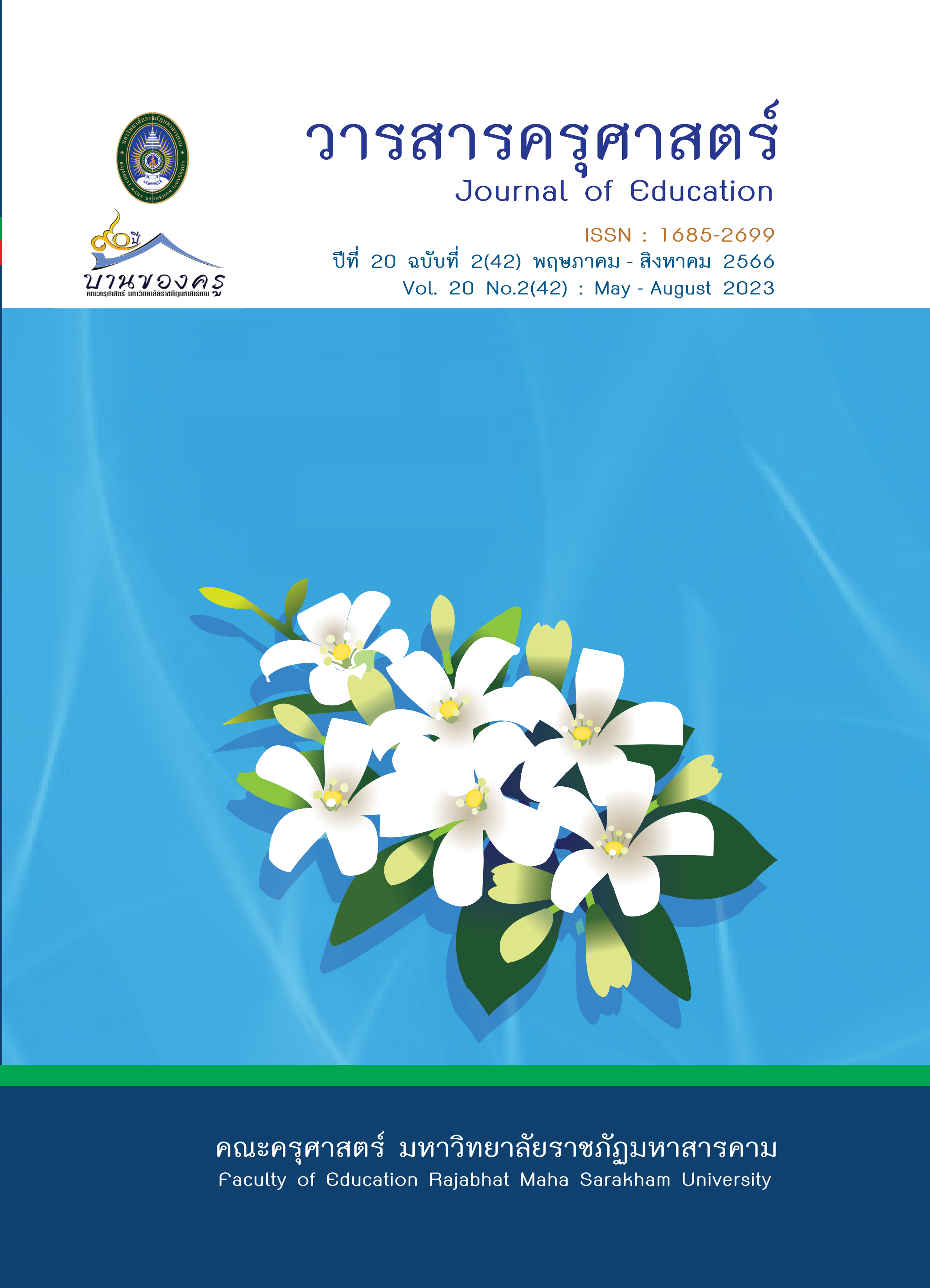A Study of Creativity Problems for Pratomsuksa 4 Students with the Test for Creative Thinking Drawing Production (TCT-DP)
Main Article Content
Abstract
The research findings were as followed: the using the TCT-DP Test pointed out that each item of the test indicated 4 elements of creativity: fluency, flexibility, originality, and elaboration. According to the scoring criteria of the TCT-DP test, there were 218 participants whose scores were below 24, meaning low creativity. There were 180 participants whose total scores were between 24-47, meaning moderate creativity, and no participants were placed on a high level of creativity. Therefore, learning instruction should be developed to enhance students’ creativity following learning in the future.
Article Details

This work is licensed under a Creative Commons Attribution-NonCommercial-NoDerivatives 4.0 International License.
ข้อกำหนดเบื้องต้นที่ผู้นิพนธ์(ผู้ส่งบทความ) ควรทราบ
1. ผู้นิพนธ์ที่ประสงค์จะลงตีพิมพ์บทความกับวารสาร ตั้งแต่เดือนมกราคม 2563 เป็นต้นไป ให้ใช้รูปแบบใหม่ (Template 2563) โดยสามารถดูตัวอย่างได้ที่เมนู GUIDELINES
2. จะตีพิมพ์และเผยแพร่ได้ ต้องผ่านการประเมินจากผู้ทรงคุณวุฒิ (Peer Review)
3. การประเมินบทความโดยผู้ทรงคุณวุฒิ (Peer Review) เป็นแบบ Double Blind
4. การอ้างอิงบทความใช้หลักเกณฑ์ APA (American Psychological Association) คลิก
5. บทความถูกปฏิเสธการตีพิมพ์ ไม่ผ่านการประเมิน ผู้นิพนธ์ขอยกเลิกเองหรือชำระเงินก่อนได้รับการอนุมัติ ทางวารสารไม่มีนโยบายการคืนเงิน
References
ฐิติวัฒน์ ศรีวะบุตร, เอมอร สิทธิรักษ์ และอารี สาริปา. (2561). ผลสัมฤทธิ์ทางการเรียนและความคิดริเริ่มสร้างสรรค์ทางคณิตศาสตร์ของนักเรียนชั้นประถมศึกษาปีที่ 1 ที่จัดการเรียนรู้ตามกระบวนการความคิดสร้างสรรค์ของทอร์แรนซ์. วารสารบัณฑิตศึกษามหาวิทยาลัยราชภัฏสกลนคร, 15(71), 171-178.
นิสรีน พรปลัด, โอภาส เกาไศยาภรณ์, วสันต์ อติศัพท์ และอัศวิน ศิลปะเมธากุล. (2564). การพัฒนารูปแบบการใช้เทคโนโลยีเสมือนจริงในสภาพแวดล้อมการเรียนรู้แบบยูบิควิตัส เพื่อส่งเสริมความคิดสร้างสรรค์ด้านศิลปะอิสลาม. วารสารการศึกษาและนวัตกรรมการเรียนรู้, 1(1), 79-95.
ปราณี พงษ์สุวรรณ. (2562). การพัฒนาหลักสูตรเสริมสะเต็มศึกษาเพื่อส่งเสริมความคิดสร้างสรรค์และความคิดผลิตภาพ สำหรับนักเรียนประถมศึกษาปีที่ 4. วารสารครุศาสตร์ จุฬาลงกรณ์มหาวิทยาลัย, 47(1), 219-239.
พระราชบัญญัติการศึกษาแห่งชาติ พ.ศ. 2542. (2542, 14 สิงหาคม). แก้ไขเพิ่มเติม (ฉบับที่ 2) พ.ศ. 2545 และ (ฉบับที่ 3) พ.ศ. 2553 มาตราที่ 24. https://person.mwit.ac.th/01-Statutes/NationalEducation.pdf
สำนักบริหารงานการมัธยมศึกษาตอนปลาย. (2561). แนวทางจัดการเรียนรู้ในศตวรรษที่ 21. https://webs.rmutl.ac.th/assets.
สุมนา โสตถิผลอนันต์. (2564). การจะใช้วิธีการเรียนรู้เชิงลึก: แนวทาง พัฒนา สร้างสรรค์. วารสารวิจัยราชภัฏ พระนคร: สังคมศาสตร์และมนุษยชาติ, 16(2), 278-293.
สำนักงาน ก.พ. (2559). การคิดเชิงสร้างสรรค์. https://www.ocsc.go.th/sites/default/files/document/ocsc-2017-eb13.pdf.
Jellen, H., and Urban, K.K. (1986). “The TCT-DP (Test for Creative Thinking-Drawing Production) : An instrument that can be applied to most age and ability groups,” Creative Child and Adult Quarterly, 1, 138-155.
Torrance, E.P. (1980). Creativity and Futurism in Education: Retooling. Education, 100(4), 298-311.


